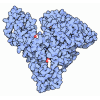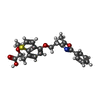Entry Database : PDB / ID : 3g9eTitle Aleglitaar. a new. potent, and balanced dual ppara/g agonist for the treatment of type II diabetes Nuclear receptor coactivator 1 Peroxisome proliferator-activated receptor gamma Keywords / / / / / / / / / / / / / / / / / / / / / / / / Function / homology Function Domain/homology Component
/ / / / / / / / / / / / / / / / / / / / / / / / / / / / / / / / / / / / / / / / / / / / / / / / / / / / / / / / / / / / / / / / / / / / / / / / / / / / / / / / / / / / / / / / / / / / / / / / / / / / / / / / / / / / / / / / / / / / / / / / / / / / / / / / / / / / / / / / / / / / / / / / / / / / / / / / / / / / / / / / / / Biological species Homo sapiens (human)Method / / Resolution : 2.3 Å Authors Ruf, A. / Benz, J. / Bernardeau, A. / Binggeli, A. / Blum, D. / Boehringer, M. / Grether, U. / Hilpert, H. / Kuhn, B. / Maerki, H.P. ...Ruf, A. / Benz, J. / Bernardeau, A. / Binggeli, A. / Blum, D. / Boehringer, M. / Grether, U. / Hilpert, H. / Kuhn, B. / Maerki, H.P. / Meyer, M. / Puenterner, K. / Raab, S. / Schlatter, D. / Gsell, B. / Stihle, M. / Mohr, P. Journal : Bioorg.Med.Chem.Lett. / Year : 2009Title : Aleglitazar, a new, potent, and balanced dual PPARalpha/gamma agonist for the treatment of type II diabetes.Authors : Benardeau, A. / Benz, J. / Binggeli, A. / Blum, D. / Boehringer, M. / Grether, U. / Hilpert, H. / Kuhn, B. / Marki, H.P. / Meyer, M. / Puntener, K. / Raab, S. / Ruf, A. / Schlatter, D. / Mohr, P. History Deposition Feb 13, 2009 Deposition site / Processing site Revision 1.0 Jun 2, 2009 Provider / Type Revision 1.1 Jul 13, 2011 Group Revision 1.2 Nov 1, 2023 Group Data collection / Database references ... Data collection / Database references / Derived calculations / Refinement description Category chem_comp_atom / chem_comp_bond ... chem_comp_atom / chem_comp_bond / database_2 / pdbx_initial_refinement_model / struct_site Item _database_2.pdbx_DOI / _database_2.pdbx_database_accession ... _database_2.pdbx_DOI / _database_2.pdbx_database_accession / _struct_site.pdbx_auth_asym_id / _struct_site.pdbx_auth_comp_id / _struct_site.pdbx_auth_seq_id
Show all Show less
 Yorodumi
Yorodumi Open data
Open data Basic information
Basic information Components
Components Keywords
Keywords Function and homology information
Function and homology information Homo sapiens (human)
Homo sapiens (human) X-RAY DIFFRACTION /
X-RAY DIFFRACTION /  MOLECULAR REPLACEMENT / Resolution: 2.3 Å
MOLECULAR REPLACEMENT / Resolution: 2.3 Å  Authors
Authors Citation
Citation Journal: Bioorg.Med.Chem.Lett. / Year: 2009
Journal: Bioorg.Med.Chem.Lett. / Year: 2009 Structure visualization
Structure visualization Molmil
Molmil Jmol/JSmol
Jmol/JSmol Downloads & links
Downloads & links Download
Download 3g9e.cif.gz
3g9e.cif.gz PDBx/mmCIF format
PDBx/mmCIF format pdb3g9e.ent.gz
pdb3g9e.ent.gz PDB format
PDB format 3g9e.json.gz
3g9e.json.gz PDBx/mmJSON format
PDBx/mmJSON format Other downloads
Other downloads 3g9e_validation.pdf.gz
3g9e_validation.pdf.gz wwPDB validaton report
wwPDB validaton report 3g9e_full_validation.pdf.gz
3g9e_full_validation.pdf.gz 3g9e_validation.xml.gz
3g9e_validation.xml.gz 3g9e_validation.cif.gz
3g9e_validation.cif.gz https://data.pdbj.org/pub/pdb/validation_reports/g9/3g9e
https://data.pdbj.org/pub/pdb/validation_reports/g9/3g9e ftp://data.pdbj.org/pub/pdb/validation_reports/g9/3g9e
ftp://data.pdbj.org/pub/pdb/validation_reports/g9/3g9e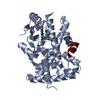
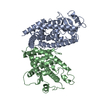
 Links
Links Assembly
Assembly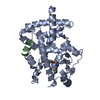
 Components
Components Homo sapiens (human) / Gene: PPARG, NR1C3 / Production host:
Homo sapiens (human) / Gene: PPARG, NR1C3 / Production host: 
 X-RAY DIFFRACTION / Number of used crystals: 1
X-RAY DIFFRACTION / Number of used crystals: 1  Sample preparation
Sample preparation ROTATING ANODE / Type: OTHER / Wavelength: 1.5418 Å
ROTATING ANODE / Type: OTHER / Wavelength: 1.5418 Å Processing
Processing MOLECULAR REPLACEMENT
MOLECULAR REPLACEMENT Movie
Movie Controller
Controller








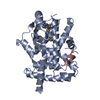



 PDBj
PDBj






